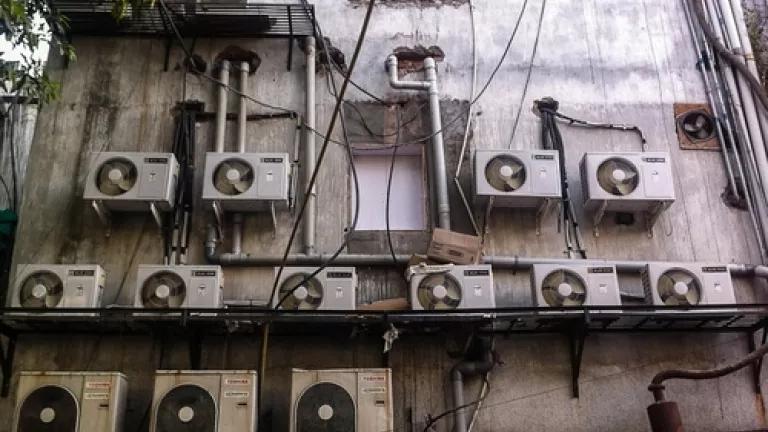Reviving U.S.-India Cooperation on Climate Change During Secretary Kerry's Visit to New Delhi

Secretary of State John Kerry heads to New Delhi next week. The visit is a key opportunity for Secretary Kerry to reinvigorate U.S.-India cooperation on climate change and to continue to make progress under the Green Partnership, the landmark clean energy and climate change agreement forged by President Obama and Prime Minister Singh in 2009.
Since the Green Partnership was signed, the United States and India have made significant progress in creating the foundation for cooperative research, development, and policy endeavors on climate change and clean energy. For example, both U.S. government agencies and businesses played a major role in growing India’s solar energy market, which is now well over 1 gigawatt of installed solar energy. To build on this progress, Secretary Kerry should re-emphasize that the United States recognizes the importance of India’s goal to provide energy access to all, from its booming cities to remote rural areas, through clean energy.
One issue to watch for during these meetings is whether Secretary Kerry and Indian leaders will make progress on phasing down hydrofluorocarbons (HFCs), the potent heat-trapping chemicals used as refrigerants in both room and automobile air conditioners. With a rapidly growing economy, air conditioning use in India is on the rise and this increase is contributing to global warming through leakage of HFCs, escalated fuel consumption for vehicles, and an upsurge in electricity consumption for buildings. Room air conditioning is already responsible for recent peak-load electricity blackouts.
In advance of Secretary Kerry’s meetings, NRDC President Frances Beinecke sent a letter highlighting three priority areas for the U.S.-India Strategic Dialogue:
- Deepen Cooperation to Grow Solar Energy Markets. India’s solar market is experiencing rapid growth and still has a long way to go to meet the National Solar Mission’s goal of 20 GW of grid-connected solar energy by 2022. As part of the dialogue process, the United States should work with the Ministry of External Affairs, Ministry of New and Renewable Energy (MNRE), and the Planning Commission to deepen Indian engagement by using a “whole of government” approach. For financing, the dialogue should share strategies in developing innovative financing models to continue investment in India’s solar market through OPIC, EX-IM, and other channels.
- Accelerate Scaling of Energy Efficiency and Phasing Down HFCs. Advancing energy efficiency will help meet the increasing energy demand, improve energy security, and fight climate change. To advance appliance efficiency, the United States and India should build on their strong partnership under the Super-efficient Equipment and Appliance Deployment (SEAD) program to harmonize upgrading test procedures and standards for more efficient air-conditioner technologies and couple leapfrogging opportunities to phase-down HFCs. The United States, as it has recently successfully done with China, should engage with India in this area to support continued progress in phasing down HFCs and other climate forcers. For efficient buildings, the dialogue should engage the Indian Planning Commission, the Ministry of Power, the Ministry of Urban Development, and Bureau of Energy Efficiency, state leaders, real estate developers, and other stakeholders for increased building code adoption and compliance. For example, New York and California could share experiences developing energy efficiency building codes and compliance models with Indian states.
- Preparing Communities for Climate Change. The United States should work with India to create a new bilateral program engaging cities and states, focused on climate adaptation, including common challenges such as flooding, infrastructure, heat and other climate disasters. NRDC and its partners have been active in the launch of South Asia’s first Heat Action Plan, a comprehensive early warning system and preparedness plan for extreme heat events in India. Drawing from this experience and the success of the JCERDC, the process for this bilateral program would include national and subnational components with joint funding to support an award process and a web-based platform for information sharing and conferences.
Recently, the United States and China reached an agreement to work toward phasing down HFC production under the Montreal Protocol, the treaty that saved the ozone layer. As part of our ongoing project, the Council on Energy, Environment and Water (CEEW), the Natural Resources Defense Council (NRDC), the Institute for Governance & Sustainable Development (IGSD), and the Energy and Resource Institute (TERI), in consultation with the Confederation of Indian Industries (CII), the Refrigeration and Air-Conditioning Manufacturers Association (RAMA) and the Society of Indian Automobile Manufacturers (SIAM), we are conducting a study of the business case for Indian companies to leapfrog and phase-down HFCs. We’ll be releasing our findings on June 26 at the Montreal Protocol meetings in Bangkok. Indian leaders and Secretary Kerry could create momentum toward progress in phasing-down HFCs globally under the Montreal Protocol.
The Strategic Dialogue discussions hold much promise for progress on climate change that would benefit both countries. As we’ve seen climate disasters around the globe - from Superstorm Sandy to extreme heat events in India - now is the time for our leaders to take action to protect our economy and communities. We’ll be watching to see what our leaders can deliver.
Photo by Bhaskar Deol, NRDC
